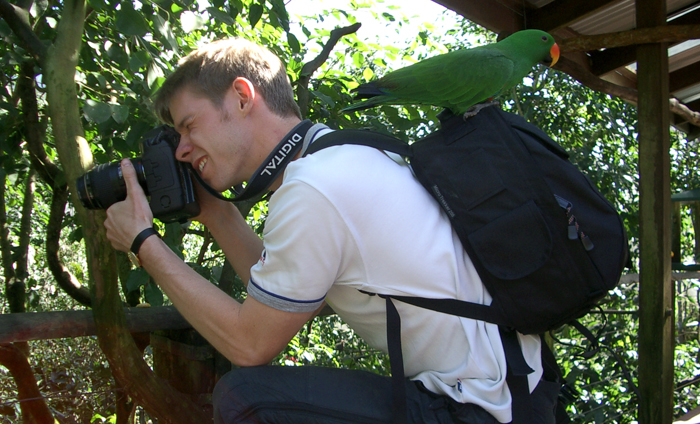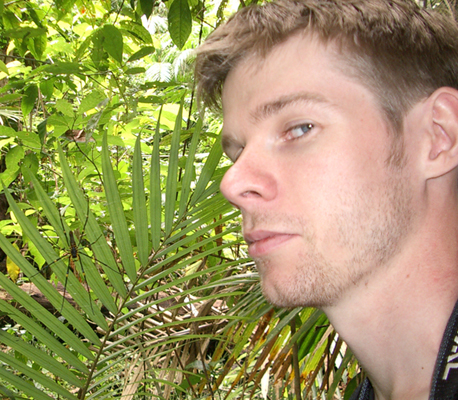



Equipment
I use a canon 300d (lately a 1d), a 100mm f2.8 and a MP-E 65mm macro lens. I also have a couple of speedlites and a tripod. I tend to shoot most of my pictures in the field holding the camera in my hand (usually bracing it against a tree or the ground) with the focus on manual. I then move gently back and forward until I find the focus 'sweetspot'. There is no doubt that this is a hard thing to do, and I've lost many good images to a slight miss-focus or camera shake. The image preview on a digital camera only tends to pick up gross errors in exposure; the subtle inaccuracies of focus are usually only apparent on the computer later.
Lighting
There are two contradictory problems with lighting on a macro scale: As the distance between the subject and the camera is reduced the lens is collecting light from a much smaller area, requiring a larger aperture to maintain exposure. At the same time the depth of field becomes very narrow, to perhaps 1mm at 1x macro. To increase the depth of field at a given focal length requires a smaller aperture. Lengthening shutter speed is also not possible as even tiny amounts of camera shake are exaggerated on a macro shot.
The only realistic option is to use flash to provide extra lighting. A single flash is rarely enough as dark shadows are cast across the subject. I use two flashes mounted on a cage either side of the camera with diffusers. This provides a much more natural lighting but is really heavy to carry around. This still causes problems in that the background is relatively (often hugely) underexposed. A third flash can be used to try to counteract this.
If you can bring the insect inside (perhaps on a pot-plant) then photographing on a tripod with a long exposure is another option. Some of the spider pictures on this site were shot with an eight sec exposure. The background exposure is corrected, and the colour and texture is far superior than with flash.
Where to find beasts
It's a cliché to suggest that the first place to look should be your back garden. It's true to a broad extent, but depends on the makeup: Insects prefer an established garden with a mixture of native plants. Foreign plants tend to have a very poor associated biodiversity. Most of the brightest flowers are annual hybrids which are sterile and support no pollinating insects. This difference is not academic - there is a huge variation in the amount of wildlife two similar looking gardens will support.
I find the richest area of all to be ancient woodland, but there is very little left in the UK. Once again distinguish this with planted conifers, which are perhaps the worst.
Most important of all is to go to places where other people will tolerate your stalking around the bushes dragging large amounts of photographic equipment. Going with a dog, girlfriend or anyone else that doesn't share your level of patience is probably a bad idea.
About me
I'm a doctor with a sideline in natural history. My interest in photography stems from my interest in biology, rather than the other way round, and I prefer to take photographs from a scientific rather than artistic merit. My intent is to capture the natural life in function as accurately as possible, and to encourage everyone to look a little closer at the world around them.
© kennethgilpin@lookingcloser.net